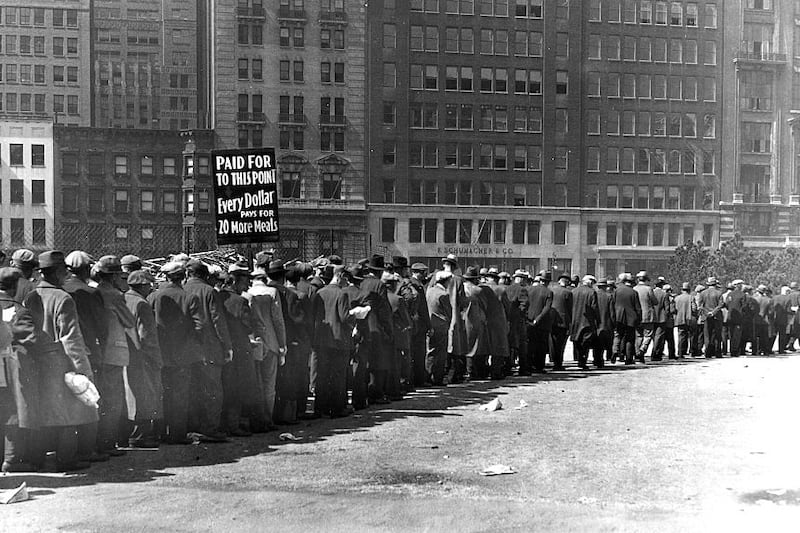On November 8th, 2016, Narendra Modi, the prime minister of India, announced that the 500 and 1,000 rupee notes (worth €7.12 and €7.24 respectively) would be demonetised with immediate effect. This act cancelled 86 per cent of the value of cash in circulation. Moreover, the cancelled notes had to be deposited in banks by December 30th, with restrictions on withdrawals.
In its boldness this move by the democratically elected leader of so vast a country makes everything that US president Donald Trump has done so far look trivial.
Should one regard it as a decisive action in India’s war against tax evasion, the black economy and pervasive corruption? Or is it a damagingly arbitrary act by an illiberal democrat? Today it seems a bit of both. In the long run it depends on what happens next.
For a politically and economically stable country suddenly to impose so unexpected and radical demonetisation is unprecedented. Why would any elected government inflict such a shock, particularly since India’s economy is so dependent on transactions in cash?
As a lower middle-income country India still contains a huge number of people who are outside the formal financial system. Moreover, India is also relatively cash-dependent even for such a country: one estimate is that cash still accounts for 78 per cent of consumer payments.
According to the finance ministry's Economic Survey 2016-17, the policy's aim was fourfold: "To curb corruption, counterfeiting, the use of high denomination notes for terrorist activities, and especially the accumulation of 'black money', generated by income that has not been declared to the tax authorities."
These goals are popular with many Indians who have tolerated the upheaval surprisingly calmly in the hope that crooks would get their deserts. These are also reasonable objectives.
Tax avoidance
Few would deny India suffers from corruption and tax avoidance on a large scale. Yet the action might also sow permanent distrust of government promises. The disease might be bad, yet the cure is costly. How costly might it be and how beneficial?
The short-run costs are evident. As the economic survey puts it laconically, these costs have taken the form of “inconvenience and hardship”, especially for those in the “informal and cash-intensive sectors of the economy”. Since hundreds of millions of Indians are very poor, this is not to be trivialised.
Driving such short-term costs was a dramatic decline in the supply of cash. According to the survey, by December this had fallen by 35 per cent, relative to demand. But it also expects it to recover as soon as April. While the growth in currency in circulation collapsed, the growth in demand deposits, itself part of the process, largely offset it. As a result, interest rates also declined.
In analysing short-run costs, the analysis emphasises three shocks: to aggregate demand, due to the decline in cash and the permanent loss of wealth for those who chose not to declare their cash holdings; to aggregate supply, due to the role of cash as an input into production (in agriculture, for example), and via enhanced uncertainty.
Overall, it concludes, demonetisation might have lowered gross domestic product, temporarily, via its effect on the money supply by between a quarter and a half a percentage point, relative to a baseline of about 7 per cent annual growth.
Yet even in the short run there will also be benefits. The analysis suggests that as much as 2 per cent of GDP was held in notes reflecting black economic activities. Some of this ill-gotten wealth will have vanished and some will have been taxed.
Black money
This is so because holders had to declare unaccounted wealth and pay penal taxes, lose it or launder it. Overall the policy allowed the government to tax black money, at least as a one-off and possibly permanently given the enhanced risks of holding cash. Overall there is a transfer of wealth from criminals to the government. It is hard to be sorry for these victims.
Furthermore, significant long-run benefits should also emerge. The shock should accelerate the movement of liquid wealth into the financial system and so enhance honesty, transparency and efficiency in the economy.
A significant result might be increased “digitalisation” of finance, though this would require complementary reforms, notably ones that make it easy for Indians without smartphones to make digital payments. Another would be more effective taxation.
Against all this must be set the recklessness of the action. What might a government that dares to do this not dare?
The balance of cost and benefit will ultimately depend on what happens now. One important point is that convertibility between bank deposits and cash must be fully restored. In the long run India might follow other economies into an almost entirely cashless economy. But it is grossly premature to attempt that now.
Policy framework
Furthermore, the government must provide the policy framework and support needed to secure financial inclusion of the population, including epayments.
No less important is action against corruption, notably including the structure and administration of taxation. Here a recent achievement has been the introduction of a goods and services tax – a form of value added tax.
Also vital is reform of electoral finance. Politicians are not above suspicion of corruption.
Finally, repetition of this action would be devastating to confidence. It simply must not happen.
It is often hard to draw the line between decisive leaders who take unpopular decisions for the benefit of their country and those who make arbitrary decisions for the benefit of themselves. Historians may judge the shock of demonetisation as an example of the former. That is still uncertain. Let us see what Modi dares to do next. – Copyright The Financial Times Limited 2017






